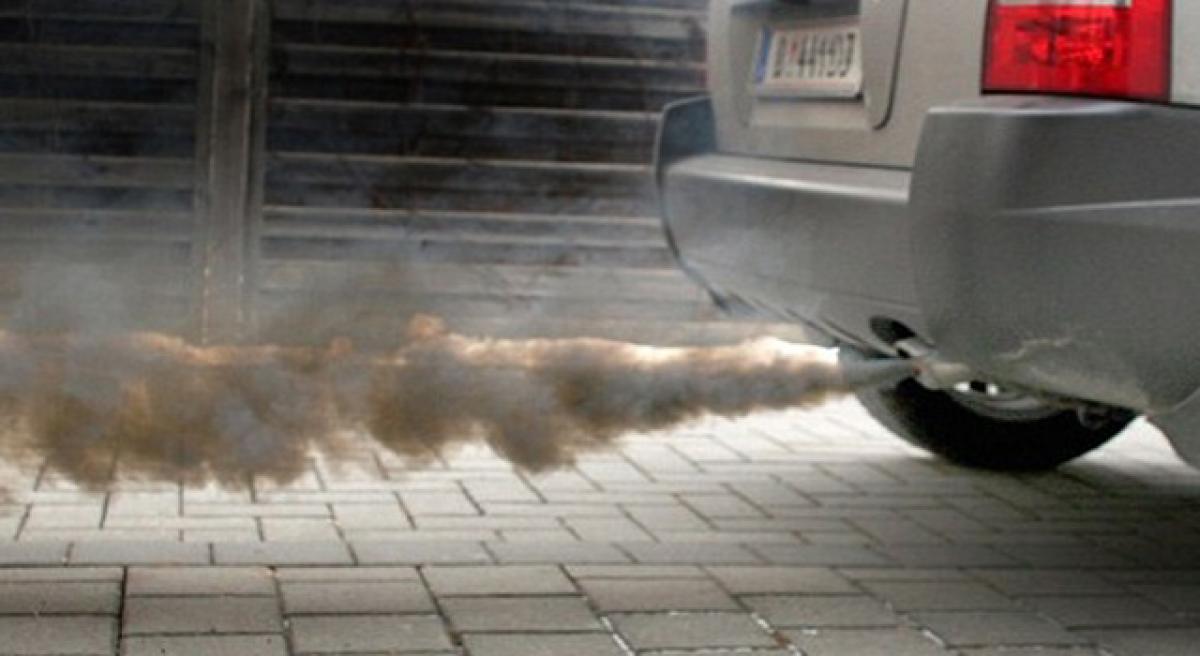Live
- GMR Airports Unveils AI-Powered Digital Twin Platform to Transform Airport Operations
- India poised to become leading maritime player: PM Modi
- Top Causes of Kidney Stones and How to Recognize Silent Symptoms
- India’s renewable energy capacity logs 14.2 pc growth at 213.7 GW
- Winter Session of Odisha Assembly adjourned sine die
- Biden calls Trump's tariff approach 'major mistake'
- After Drama Over Eknath Shinde’s Chief Minister Race, Maharashtra Cabinet Formation Faces New Tensions
- Egyptian FM, Blinken discuss recent developments in Syria
- Iran's supreme leader says Syria's developments result of US-Israeli 'plot'
- Elon Musk to Purchase $100 Million Luxury Mansion Next to Donald Trump's Mar-a-Lago, Report Reveals
Just In
Nellore witnesses alarming rise in carbon monoxide levels


If you see a bus, an auto, or an old vehicle in the city-they release huge smoke coupled with Carbon Monoxide, which commonly known as CO. Still, no official connected to pollution control measures in the city will never act against them.
Nellore: If you see a bus, an auto, or an old vehicle in the city-they release huge smoke coupled with Carbon Monoxide, which commonly known as CO. Still, no official connected to pollution control measures in the city will never act against them.
The reason is simple as they don’t know about these levels and impact on public health or they don’t care it even if they know the repercussions. Carbon Monoxide, which is a common environmental hazard, is now spreading its tentacles in city with no measures being taken up by the officials concerned.
The bulletins of the AP Pollution Control Board (APPCB) making the people dumbfounded with the alarming levels of the gas during peak hours which prompts immediate action to reduce the increasing pollution.
At 5 and 6 pm on Thursday, the level was 500.0 µg/m³-AQI 25 which indicates ‘very poor’ scenario. It was 380.0 µg/m³-AQI 19 at 6 pm on March 6 which also indicates the same status of ‘very poor’.
The city has become like an oven which has been producing abundant CO during peak travel hours in the morning and evening time as there has been no proper check on measures to reduce the pollution from vehicles that fail to maintain ‘Euro’ standards. It may be recalled that the APPCB had arranged Online Ambient Air Quality Monitoring Stations in Nellore city.
A total of 12 pollutants, including SO2, NO2, PM10, PM2.5 (particulate matter of up to 10 micron and up to 2.5 micron size), ozone, lead, arsenic, nickel, CO, NH3, benzene, and BaP (particulate phase) will be regularly monitored with an aim to meet National Ambient Air Quality Standards (NAAQS) in urban areas by 2017 by the Central Pollution Control Board.
Three Zonal laboratories located at Visakhapatnam, Vijayawada and Kurnool and nine Regional Offices are carrying out these activities as part of Prevention and Control of Pollution Act, 1981. A network with 41 ambient air quality monitoring stations have been set up across the state to assess the air quality and its changes.
But, the data being supplied by these online air quality monitoring stations is quite good except levels of CO which creates health hazards. The station gives levels of Nitrogen Dioxide (NO2), Nitric Oxide (NO), Trioxygen (O3), Sulphur Dioxide (SO2), and information about particulates PM2.5, PM10, and CO along with other normal weather conditions.
But, astonishingly, the levels of CO have been continuously increasing during peak hours in the city. CO is a common hazard resulting from the incomplete burning of natural gas and any other material containing carbon such as petrol, kerosene, oil, propane, coal, or wood. Forges, blast furnaces and coke ovens also produce the gas.
Environmentalists say CO is destructive when breathed since it displaces oxygen in the blood and highly impacts the heart, brain, and other chief organs of humans. Large amounts of CO can lead to unconsciousness and suffocation in the form of headache, fatigue, dizziness, drowsiness, or nausea. Sudden chest pain may also occur in people with angina.
“These levels have to be reduced taking appropriate measures by various line departments since they hugely impact public health. Suspended particles also worsen health conditions. Rising CO levels indicate no measures being taken up by the administration to control pollution,” said Prof P Rajendra Prasad from Chemical Engineering Department of Andhra University.
By P V Prasad

© 2024 Hyderabad Media House Limited/The Hans India. All rights reserved. Powered by hocalwire.com






